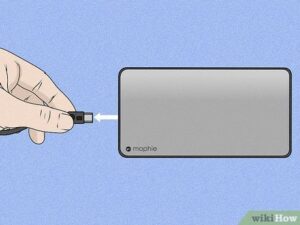A float charger is a handy device that allows you to effortlessly maintain the charge of your batteries, ensuring they are always ready to use when you need them. It operates by delivering a low, continuous charge to the battery, preventing it from overcharging or losing power due to self-discharge. With a float charger, you can say goodbye to the hassle of regularly checking and recharging your batteries. This article will delve into the functionality, benefits, and practical uses of float chargers, shedding light on what makes them an essential tool for any battery-powered equipment. So, let’s explore what a float charger really is and how it can simplify your battery maintenance routine.
What is a Float Charger?
A float charger, also known as a float maintenance charger or a float battery charger, is a device used to maintain the charge of a battery at a specific voltage level. It provides a low-level electrical current to the battery, preventing it from discharging while also avoiding overcharging.
Float chargers are commonly used for various types of rechargeable batteries, including lead-acid batteries found in cars, motorcycles, boats, and other vehicles. They are also used for maintenance charging in applications such as standby power systems, emergency backup systems, and renewable energy systems.
Float chargers work on the principle of maintaining a constant voltage rather than delivering a high current. Unlike traditional chargers that deliver a bulk charge to quickly recharge a battery, float chargers provide a continuous trickle charge to keep the battery at its fully charged state without causing any damage or reduction in battery life.
How Does a Float Charger Work?
Float chargers operate by connecting to the battery terminals and delivering a small, constant current to offset self-discharge and maintain the charge level. When a battery is fully charged, it reaches its float voltage, which is lower than the bulk charging voltage. The charger then switches to a float mode, where it maintains the battery at this lower voltage.
To understand how float chargers work, let’s break down the charging process into three stages:
1. Bulk Charging: In the bulk charging stage, a charger applies a higher voltage to the battery, typically between 13.8 and 14.4 volts for a 12-volt battery. This higher voltage supplies a relatively high current to quickly recharge the battery. Once the battery reaches a certain voltage threshold, the charger switches to the next stage.
2. Absorption Charging: In the absorption charging stage, the charger maintains a constant voltage slightly lower than the bulk charging voltage. This voltage level allows the battery to absorb the remaining charge and reduces the charging current. During this stage, the battery reaches nearly full capacity.
3. Float Charging: Once the battery reaches its full capacity, the charger switches to float mode. In this stage, the charger maintains a lower voltage, typically around 13.2 to 13.4 volts, to counteract self-discharge. The current delivered by the charger is minimal, just enough to compensate for the battery’s internal losses and keep it fully charged.
Benefits and Applications of Float Chargers
Float chargers offer several benefits and find applications in various fields. Some of their key advantages include:
- Battery Maintenance: Float chargers help extend the lifespan of batteries by preventing excessive discharge and overcharging.
- Convenience: They provide a hassle-free way to keep batteries constantly charged without manual intervention.
- Cost Savings: By maintaining optimal battery levels, float chargers help avoid premature battery replacements.
- Reliability: Float chargers ensure that standby power systems, emergency backup systems, and renewable energy systems are always ready to use.
The applications of float chargers are diverse and include:
1. Automotive:
Float chargers are commonly used for automotive applications, such as:
- Keeping vehicle batteries charged during long periods of inactivity, such as winter storage.
- Maintaining the charge of batteries in rarely used vehicles, such as vintage cars or motorcycles.
- Preventing the self-discharge of batteries in vehicles with infrequent use, such as recreational vehicles (RVs) or boats.
2. Standby Power Systems:
Float chargers play a crucial role in maintaining the reliability of standby power systems, including:
- Uninterruptible Power Supply (UPS) systems used in data centers and critical infrastructure.
- Emergency lighting systems in buildings, ensuring they are always ready for use during power outages.
- Security systems, providing a continuous power source for alarms, surveillance cameras, and access control systems.
3. Renewable Energy Systems:
Float chargers are employed in renewable energy systems to maintain battery banks used for storing energy generated by sources like solar panels and wind turbines. They help ensure that the batteries remain fully charged and ready to provide power when needed.
Choosing the Right Float Charger
When selecting a float charger, it is important to consider certain factors to ensure compatibility and optimal performance. Some key considerations include:
1. Voltage:
Ensure that the float charger is compatible with the voltage of the battery you intend to charge. For example, if you have a 12-volt battery, choose a float charger designed for 12-volt systems.
2. Current Rating:
Consider the current rating of the float charger, which determines how much current it can deliver to the battery. A higher current rating allows for faster charging or supports larger battery capacities.
3. Battery Type:
Different battery chemistries have specific charging requirements. Make sure the float charger is suitable for the battery type you are using, such as lead-acid, gel, or AGM (Absorbent Glass Mat) batteries.
4. Safety Features:
Look for float chargers that offer built-in safety features like overcharge protection, short circuit protection, and reverse polarity protection. These features help prevent damage to the battery and ensure safe charging.
5. Quality and Reliability:
Choose float chargers from reputable manufacturers known for producing reliable and durable charging equipment. Reading customer reviews and considering product warranties can help gauge the quality and reliability of a float charger.
Tips for Using Float Chargers
To get the most out of a float charger and keep your batteries performing optimally, consider the following tips:
- Read and follow the manufacturer’s instructions and guidelines for the specific float charger model.
- Ensure the battery terminals are clean and free of corrosion before connecting the float charger.
- Place the float charger in a well-ventilated area to prevent overheating.
- Regularly check the battery’s electrolyte levels and top up with distilled water if necessary (for flooded lead-acid batteries).
- Periodically inspect the battery for any signs of damage or leakage.
- If using a float charger for long-term storage, periodically check the battery and recharge if needed to maintain optimal charge levels.
In conclusion, a float charger is a valuable device that helps maintain the charge of batteries, extending their lifespan and ensuring reliable performance. Whether for automotive applications, standby power systems, or renewable energy systems, float chargers provide a convenient and efficient way to keep batteries in top condition. By understanding how float chargers work and considering important factors when choosing one, you can optimize battery maintenance and maximize their longevity.
Frequently Asked Questions
What is a float charger and how does it work?
A float charger, also known as a trickle charger, is a device that helps maintain the charge of a battery over an extended period of time. It is commonly used for automotive or marine batteries that are not regularly in use. The float charger works by supplying a low level of current to the battery to counteract self-discharge and prevent it from discharging too much.
Why is a float charger important for battery maintenance?
A float charger is important for battery maintenance because it helps prevent the battery from losing its charge over time. When a battery is left unused for a prolonged period, it tends to slowly discharge. Using a float charger ensures that the battery remains fully charged and ready for use whenever needed.
Can I use a float charger on any type of battery?
Float chargers are designed to be compatible with various battery types, including lead-acid, gel-cell, and AGM (absorbent glass mat) batteries. However, it is always recommended to check the manufacturer’s guidelines to ensure that the float charger is suitable for the specific type of battery you are using.
Is it safe to leave a battery connected to a float charger for a long time?
Yes, it is generally safe to leave a battery connected to a float charger for an extended period. Float chargers are specifically designed to provide a low level of current that is safe for the battery and prevents overcharging. However, it is still advisable to periodically check the battery and charger to ensure everything is functioning properly.
Can a float charger revive a fully discharged battery?
No, a float charger is not designed to revive a fully discharged battery. It is primarily used for battery maintenance and prevention of self-discharge. If a battery is completely discharged, it typically requires a different type of charger, such as a smart charger or a battery booster, to bring it back to a usable state.
How long does it take for a float charger to fully charge a battery?
The charging time of a battery using a float charger can vary depending on the size and capacity of the battery, as well as the specific float charger being used. It is recommended to refer to the manufacturer’s instructions or specifications for an estimate of the charging time. Generally, float chargers are designed to provide a slow and continuous charge, so it may take several hours or even days to fully charge a battery.
Final Thoughts
A float charger is a device that helps maintain the charge of a battery by providing a steady and low level of electrical current. It is commonly used for vehicles, boats, motorcycles, and other equipment that are not frequently used. The purpose of a float charger is to prevent the battery from being overcharged or completely discharged, which can lead to damage and shorten its lifespan. By keeping the battery at its optimal charge level, a float charger ensures that it is ready to be used whenever needed. So, what is a float charger? It is a reliable solution for battery maintenance and longevity.



